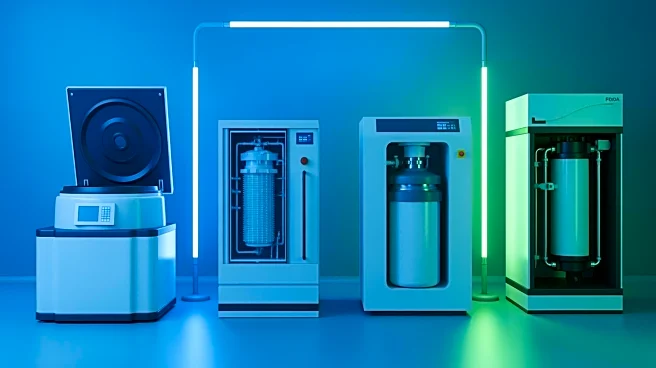What's Happening?
The Food and Drug Administration (FDA) has revised its ICH Q5A guidelines, emphasizing the importance of virus titer and purity in viral clearance testing for therapeutic proteins. These updates aim to
enhance the scientific basis for viral clearance validation by encouraging the use of next-generation sequencing and other molecular methods. The revisions call for deeper characterization of viral inactivation and suggest replacing traditional assays with more advanced techniques. This shift is influencing the design and evaluation of viral clearance studies, as manufacturers are now required to align with these new regulatory expectations. The changes are expected to streamline virus production and improve study efficiency through small-scale, closed-system bioreactors.
Why It's Important?
The updated guidelines are significant for the biopharmaceutical industry as they set new standards for ensuring the safety and efficacy of therapeutic proteins. By incorporating advanced molecular methods, the FDA aims to improve the accuracy and reliability of viral clearance processes, which are crucial for preventing contamination in biopharmaceutical products. This could lead to more robust viral clearance studies, potentially reducing the risk of viral contamination in therapies. Manufacturers who adapt to these changes may benefit from increased efficiency and compliance with regulatory standards, while those who fail to do so could face challenges in meeting FDA requirements, impacting their ability to bring products to market.
What's Next?
Manufacturers in the biopharmaceutical sector will need to adjust their viral clearance processes to comply with the new FDA guidelines. This may involve investing in next-generation sequencing technologies and re-evaluating current practices to ensure alignment with the updated standards. The industry can expect further discussions and training sessions to help stakeholders understand and implement these changes effectively. Additionally, the FDA may continue to refine these guidelines based on feedback and technological advancements, potentially leading to further updates in the future.
Beyond the Headlines
The shift towards more advanced molecular methods in viral clearance testing reflects a broader trend in the biopharmaceutical industry towards precision and innovation. This could lead to long-term improvements in the safety and quality of therapeutic proteins, fostering greater trust among consumers and healthcare providers. The emphasis on virus purity and characterization may also drive advancements in related fields, such as gene therapy and personalized medicine, as researchers seek to apply these rigorous standards to other areas of biopharmaceutical development.











